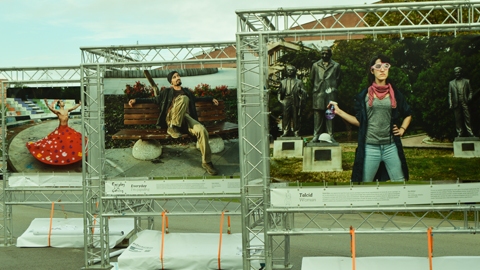#Gezieffect: Art as a way to peaceful resistance

20/10/2016
On Monday 24 October the UAB will be presenting the #Gezieffect project in the UAB Cinema and the event will be attended by artist, photographer and activist Oriana Eliçabe. Her photo exhibition is made up of 16 portraits and an audiovisual piece complementing the portrait, produced by the Institut Català Internacional per la Pau (ICIP).
On 28 May 2013, a group of activists camped at Gezi Park, in Istanbul, to prevent the building of a shopping mall in the park area. The Turkish Prime Minister, Mr Recep Tayyip Erdogan, ordered the demonstrators to be evicted and his violent intervention led to great social mobilizations that spread across several Turkish cities. In defence of democracy, the citizenry occupied the streets and the park, which turned into a symbol of resistance. Out of this endeavour grew the #Gezieffect.
During the mobilization, some photographs such as “Talcid Man”, “Woman in black” or “Woman in red”, were shown in the media and went viral on social networks. The men and women in the pictures were anonymous people who represented all demonstrators at Gezi, and those pictures served as a symbol of the experiences that many people had lived through in that park. The #Gezieffect, symbolizing peaceful and creative resistance, helped people to stand against police repression without fear and with a touch of humour.